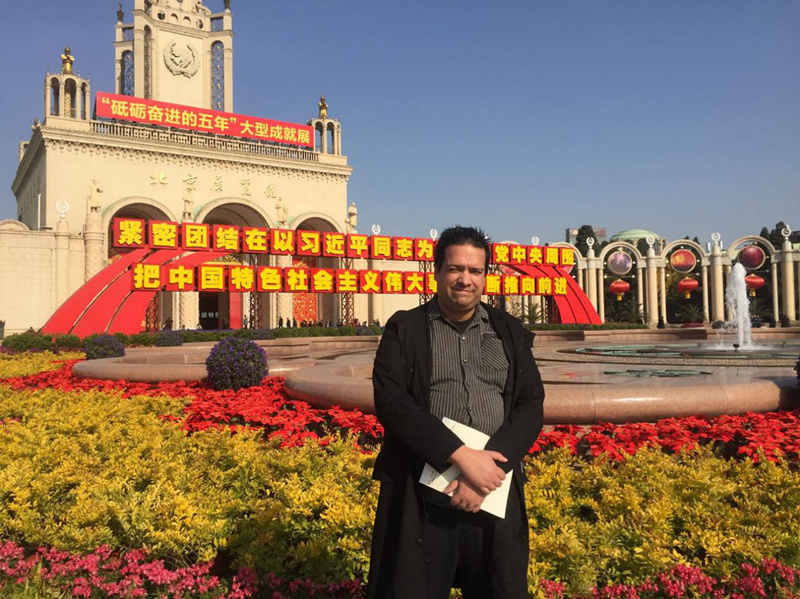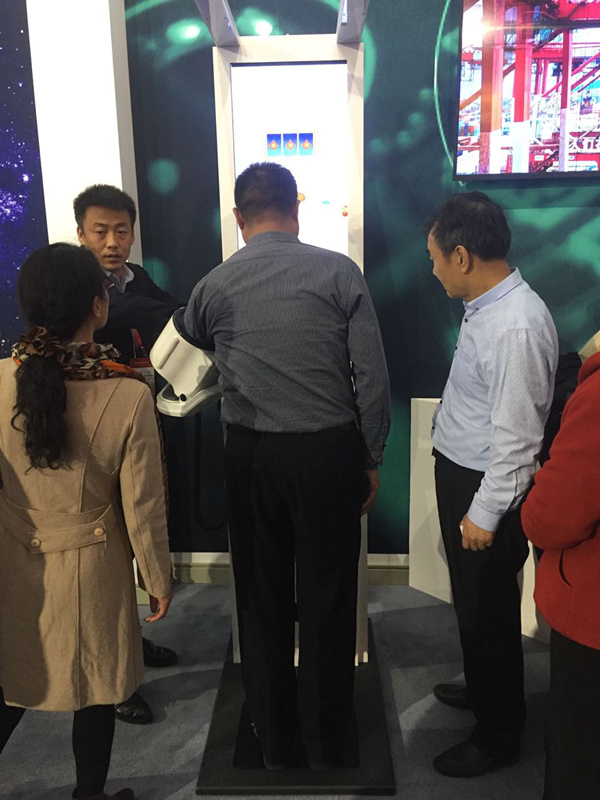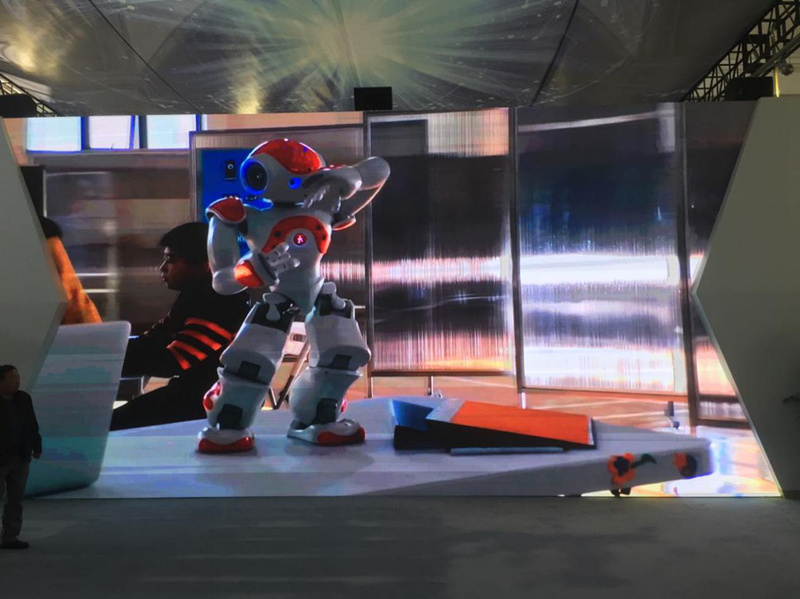By Tom McGregor, CCTV.com Panview commentator and editor
China has taken bold steps in recent years to rejuvenate its economy by embarking on huge infrastructure projects, urbanization and supporting innovations in the science and technology fields.
China, even just ten years ago, looks so much different than it does now and we can anticipate the nation to transform even further a decade from now.
The Beijing Exhibition Center, located in the heart of the capital city, is holding a grand exhibit featuring China’s outstanding achievements over the past five years to highlight China’s greatest infrastructure achievements, as well as new sci.-tech developments, along with showing a new vision of our future.
New developments for new era
CCTV.com Panview visited the Beijing Exhibition Center on Wednesday morning, Nov. 8, 2017 to take a closer look. The first surprise was to see the huge crowds as long lines of people stood outside in the cold.

(Tom McGregor, commentator and editor of Panview, CCTV.com visited the Beijing Exhibition Center on Wednesday morning, Nov. 8, 2017 to take a closer look at the exhibition featuring China’s outstanding achievements over the past five years. Photo by Li Shouen)
The exhibit in general did not fail to disappoint, as visitors could view vivid poster photos plastered all over the walls and you could touch the numerous models of China's big projects, such as an artificial sun, FAST (Five-hundred-meter Aperture Spherical radio Telescope), world's largest radio telescope, hi-speed trains, deep sea research submersibles and so much more.
You could walk to 11 different exhibition areas, which feature different themes, including transportation, energy, crackdown on corruption, PLA (people Liberation Army) advances in weaponry, new inventions, hybrid agriculture and a look to the future.
Future era for hi-tech
China's future may likely be dominated by Industry 4.0, which supports the manufacturing sector with IoT (Internet of Things), AI (artificial intelligence), Big Data, drones, robot factory workers and intelligent logistics networks.
The tools of tomorrow make for more efficient factories and warehouses that can conduct operations at lower costs. Careful monitoring of all movements in the logistics chain, from production to transport to stores can function in a streamlined manner by the same company.
The Beijing Exhibition Center highlights all of these aspects of Industry 4.0, which are now known as "Made in China." Visitors can see models and photos with detailed explanations on how new technologies will impact the manufacturing industries, not only in China but throughout the world.
For example, you can witness a demonstration of 3D printing in action when a person re-creates new designs from potato ingredients.
Advances in rural medical care
One of the most popular demos appeared to be a place where people could get a quick medical check-up from the ‘Health Service Robot’ that was originally manufactured in Xianyang, Shaanxi Province.
Continuous long lines were formed, mainly elderly people, waiting to step up to the machine. They stand on a weight scale and place their left arm into a blood pressure machine. The Health Service Robot appears to conduct facial recognition and body scan in a minute or two.

(Visitors queuing for a quick medical check-up by the ‘Health Service Robot’. Photo by Colin Robinson)
Afterwards, the person is given a paper that shows their current medical condition, while the information is fed into a Big Data engine that can be fed to the patient’s files and submitted to their doctor and local hospital.
The Health Service Robot can play an effective role in China’s rural regions, since patients can first visit the local clinic and if it detects a serious illness, the real-time information can be delivered to the local hospital.
Deep learning with AI
Another popular site at the Beijing Exhibition Center seems to be the Deep Learning and AI section. Here’s where you can capture a more extensive outlook on how AI really works.
AI continues to make new advances, almost daily. For AI to keep upgrading, developers are required to construct ‘Deep Learning’ machines that support AI brains to learn new information and to analyze the data on its own accord.

(An AI robot displayed at the exhibition Photo by Colin Robinson)
Some say the AI brain will eventually surpass the human brain when it comes to enlightenment and wisdom. Accordingly, critics consider that dangerous should AI robots decide to rebel against human masters.
But AI developers insist otherwise. Humans are the creators of AI with full control of its programming and so if AI Robots begin to act in a reckless manner, they can be easily shut down.
The future, both good and bad
The future is a lot like our lives nowadays. There's many good traits about today’s surroundings, but there's also some bad with evil people and technologies that can be destructive.
For instance, many people love to drive cars to work but that has led to heavy traffic jams and people were killed in accidents. But cars are good overall and so we should not ban them.
And in our future, we will witness some amazing new inventions and innovations that will make our lives easier, but meanwhile some aspects of science and technology will cause a negative impact, such as factory workers losing jobs to factory robots.
But we should embrace the future and prepare for its arrival, which is why the Beijing Exhibition Center has enjoyed such popular acclaim for its new exhibits on China’s achievements with a glimpse to the future.
(The opinions expressed here do not necessarily reflect the opinions of Panview or CCTV.com. )

Panview offers a new window of understanding the world as well as China through the views, opinions, and analysis of experts. We also welcome outside submissions, so feel free to send in your own editorials to "globalopinion@vip.cntv.cn" for consideration.
















